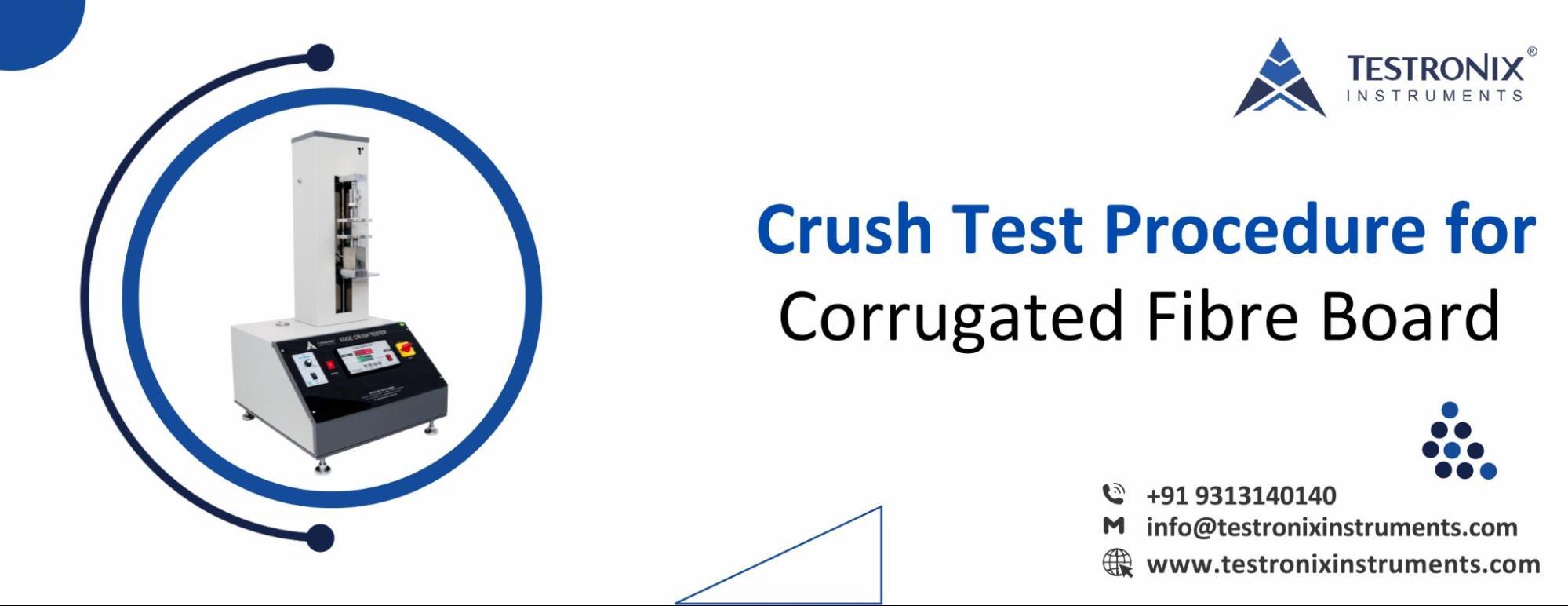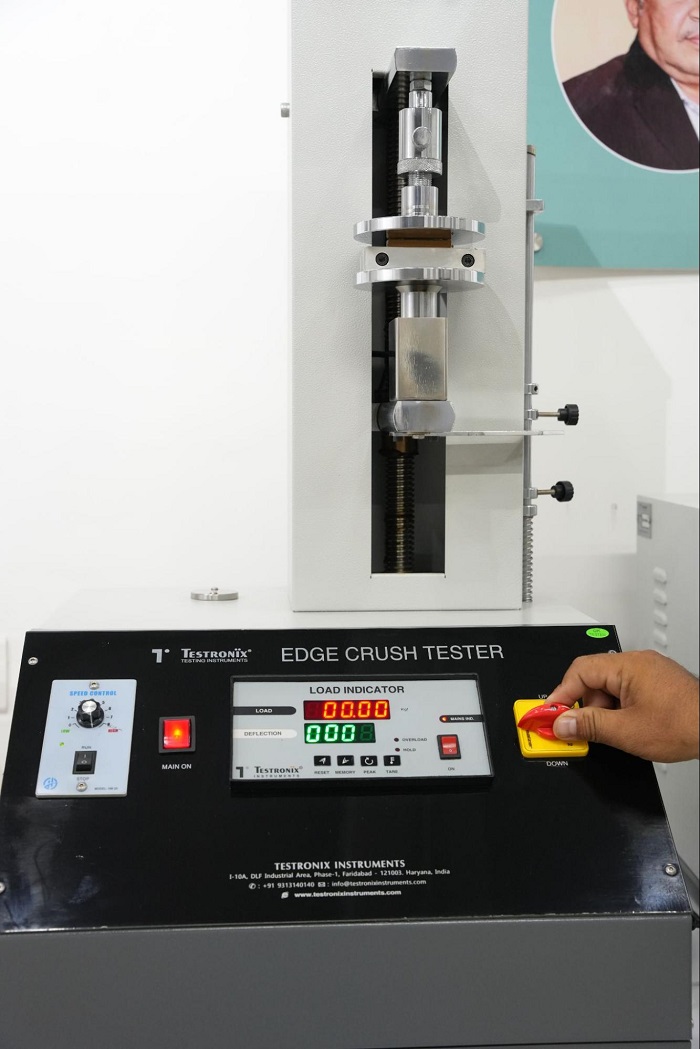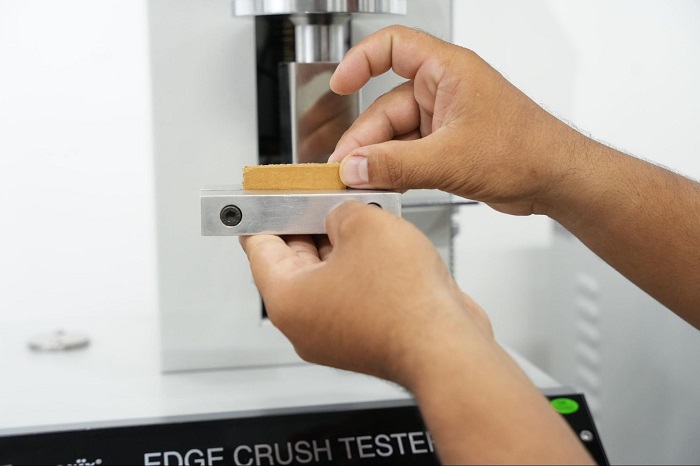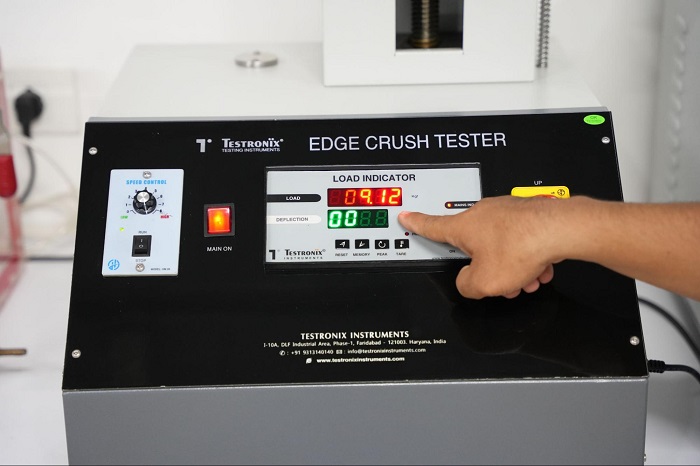Reviewed by Anurag Mishra (Sr. Technical Consultant)

You start to envision the current situation. You are right in the middle of a production run. Boxes are rolling off the assembly line and looking fine. Clean cuts, sharp edges, and perfectly glued seams. The problem, however, is hidden and can't be seen by the naked eye. So impressive on the outside, but these boxes might fail during shipping and crush under pressure, leading to huge losses due to damaged products and customer complaints.
What went wrong? The answer often lies in one critical variable that can be a deal-breaker or a development-maker for the strength of your corrugated fibreboards, and inadequate resistance to crumpling.
Corrugated fibre boards are thus the strong backbone of any packaging solution. Ranging from heavy-duty industrial containers to delicate packaging for fragile items, the stress that these boards can resist is quite high. But how to know if it will hold under real-life conditions? If correctly tested, corrugated fibreboards may have some weaknesses that are unnoticed totally, hence leading to the compromise of structural integrity where it really counts.
A crush-resistant corrugated fibreboard can crush in and leave your product nonuniform upon delivery. Even if the fibreboard looks perfect, little testing can save you from troubles uncountable. This is the power of crush testing.

And there comes the “Hero of the story”, the Edge Crush Tester for all of us in the packaging industry. This is the one and, well, probably the only equipment that will leave your mind at peace, thus assured in all possible ways that every box coming out of the facility is also up to the task. The Edge Crush Test is a standardized test whereby the edgewise compressive strength of a corrugated fibreboard is determined. It simulates the kind of pressure a box might experience during the handling of products stacked inside it, and stacking when being shipped.
Why is the ECT so important? It's simple—this test allows you to look forward to the amount of weight a corrugated board will withstand before it tends to collapse. The higher the ECT value, the stronger the board, and the more confidence you can have in its performance.
Indeed, in what manner does this test exactly work? More than that, how would you perfect its utilization to avoid the pitfalls of weak packaging?
The procedure of performing a crush test has now been explained step by step. The whole process is very meticulous and requires a good deal of care, to be sure of getting accurate results.
Sample Preparation:
The first stage involves sample preparation of corrugated fibreboard. The cutting process should be accurate because any deviation might cause irregular results in the test. The sample's edges ought to be well-finished and clear of any blemishes.
Sample Setting:
The sample would be placed between the two rigid types of clampers within the edge crush tester. It must be adequately set because any form of lean or tilt will likely be the reason for faulty measurements.
The platen surfaces should be parallel and the sample centered to ensure an even distribution of the compressive force.

Applying the Force:
Once the sample is in place, the machine applies a gradually increasing compressive force to the edge of the board. It does so at a constant speed, with the machine on hand to register the maximum force the board can handle before this board buckles or fails.
But here the main point to be taken into account is the force to be applied uniformly all over the entire edge of the sample. For this, the calibration and maintenance of the Edge Crush Tester is to be very accurate.
Recording the Results:
The force that the sample resists to its highest is taken as the recorded value for the Edge Crush Test. This indicates the board's edgewise compressive strength.
The repeatability of these results on many samples taken from the same batch means that the board consistently shows strength.
The large difference between the tests should indicate that there is a problem in the board's production, and it may arise from the nonuniformity of fluting or adhesive coating.

KNOWLEDGE CORNER!
Indeed, the ECT can be performed on single, double, and triple-wall corrugated boards. This test determines the comparative strength of the different board types, under edgewise compressive forces.
Yes, generally speaking, the heavier the corrugated board, the higher its ECT rating will be. This is due to its being manufactured with more paper, which typically translates into additional strength. However, the quality and construction of the board are equally important.
It would be proper to say that the ECT value is one of the major factors in calculating a BCT value. It estimates the amount of pressure that a box can endure before it is damaged, which again is impacted by the box’s ECT.
Do you wish to take your packaging to the next level? Let us know how we can get Edge Crush Testing integrated into your production line today.
Contact us at +91 9313 140 140
Email: info@testronixinstruments.com
Website: Testronixinstruments.com
Let's keep your packaging as tough as your commitment to quality!